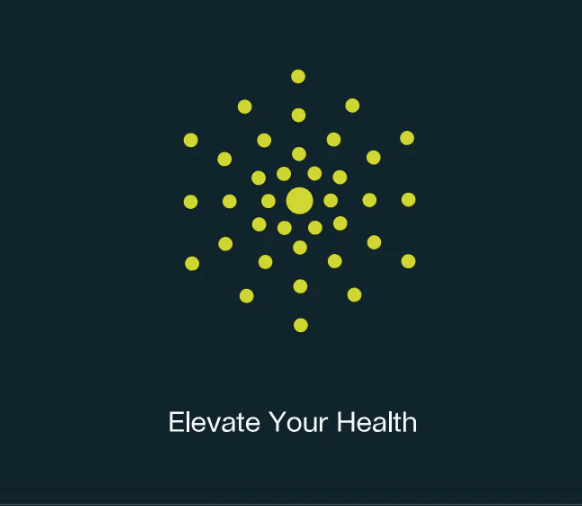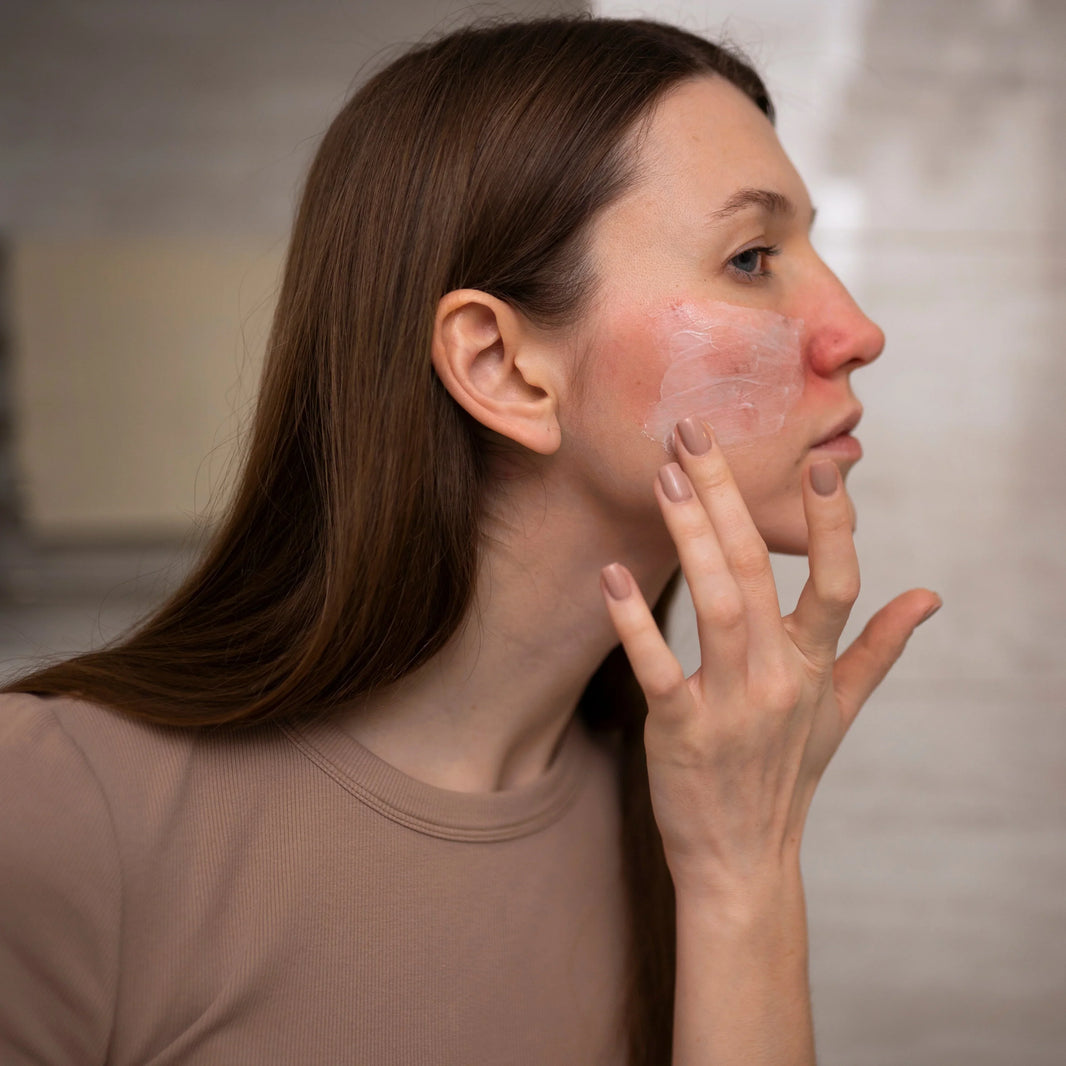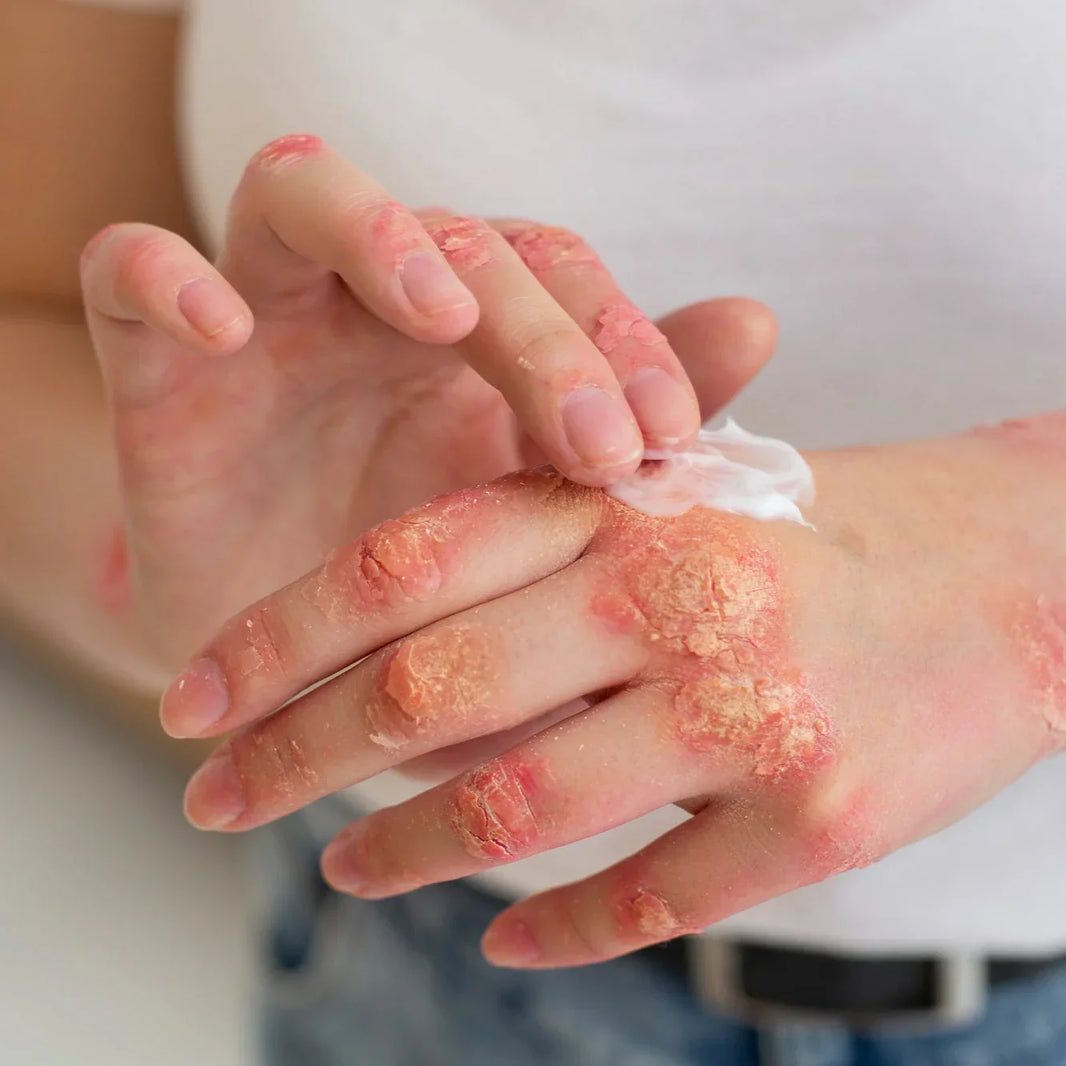Gout is a common inflammatory arthritis characterized by the deposition of monosodium urate (MSU) crystals in joints and surrounding tissues, primarily triggered by hyperuricemia (elevated serum uric acid levels). The pathophysiology involves a complex interplay of metabolic, genetic, and inflammatory processes, with the NLRP3 inflammasome playing a central role in mediating the acute inflammatory response that produces the characteristic painful flares. Current treatment approaches focus on urate-lowering therapy through various mechanisms and anti-inflammatory interventions to manage acute attacks. While conventional medications like xanthine oxidase inhibitors, uricosurics, and anti-inflammatory agents have established efficacy, emerging treatments targeting the NLRP3 inflammasome pathway and novel urate transporter inhibitors show promise. Interestingly, circadian rhythm regulation appears to influence gout flare timing, offering potential new therapeutic avenues. This review comprehensively examines the mechanisms underlying gout pathogenesis and evaluates the evidence behind various treatment approaches, from well-established to experimental.
Definition and Epidemiology of Gout
Gout is recognized as the most prevalent form of inflammatory arthritis worldwide, with increasing incidence in both developed and developing countries15. This chronic inflammatory joint disease results from the accumulation of monosodium urate (MSU) crystals in articular and periarticular tissues, causing intense pain, swelling, and erythema37. Acute gout typically presents as the sudden onset of excruciating pain, often beginning in the first metatarsophalangeal joint (the "great toe"), a presentation so characteristic that it has diagnostic significance9. The disease follows a predictable progression from asymptomatic hyperuricemia to acute intermittent attacks, intercritical periods (symptom-free intervals between attacks), and eventually, in some patients, advanced or chronic tophaceous gout characterized by permanent joint damage and visible crystal deposits called tophi78. The global burden of gout is substantial, with the condition affecting millions worldwide and causing significant impairment in quality of life, productivity loss, and healthcare expenditure15.
The epidemiological patterns of gout demonstrate notable demographic variations, with higher prevalence among males and increasing incidence with age15. Risk factors include genetic predisposition, dietary factors (especially purine-rich foods, alcohol, and fructose-sweetened beverages), medications (such as diuretics), comorbid conditions (particularly hypertension, obesity, diabetes, and cardiovascular disease), and metabolic syndrome315. The rising prevalence of gout in recent decades parallels the increasing prevalence of these risk factors, particularly obesity and metabolic syndrome3. Furthermore, patients with chronic kidney disease (CKD) and end-stage renal disease (ESRD) exhibit significantly higher rates of gout due to impaired uric acid excretion, presenting unique challenges in management12. The interconnection between gout and various comorbidities underscores the importance of understanding its pathophysiology as part of a broader metabolic and inflammatory disease spectrum.
Pathophysiology of Hyperuricemia and Crystal Formation
The fundamental biochemical abnormality underlying gout is hyperuricemia, defined as serum urate levels exceeding the physiological saturation threshold, typically 6.8 mg/dL at physiological temperature and pH35. Uric acid represents the end product of purine metabolism in humans, who lack the enzyme uricase that converts uric acid to the more soluble compound allantoin6. This evolutionary loss of uricase activity distinguishes humans from most mammals and contributes to our naturally higher serum urate levels10. Hyperuricemia develops through two main pathophysiological mechanisms: overproduction of uric acid (10-15% of cases) or, more commonly, underexcretion by the kidneys (85-90% of cases)97. The kidney handles urate through a complex process involving glomerular filtration, reabsorption, and secretion, with approximately 90% of filtered urate being reabsorbed in the proximal tubule through transporters such as URAT1 (urate transporter 1)6. Genetic variations in these transporters contribute significantly to individual differences in serum urate levels and susceptibility to gout.
When serum urate concentrations exceed the solubility threshold, monosodium urate crystals begin to form and deposit in tissues, particularly in peripheral joints and surrounding structures7. Crystal formation is not simply a concentration-dependent precipitation event but is influenced by multiple factors including temperature (explaining the predilection for peripheral joints), pH (acidic environments promote crystallization), and local tissue factors such as cartilage components that may serve as nucleation sites107. The typical needle-shaped MSU crystals can remain asymptomatic for years in some individuals with hyperuricemia, suggesting that additional factors beyond crystal presence are necessary to trigger the inflammatory cascade that results in clinical gout57. Importantly, once formed, MSU crystals can act as a persistent reservoir for future inflammation, explaining why chronic management of hyperuricemia is essential for long-term control of gout36.
NLRP3 Inflammasome Activation and Inflammatory Cascade
The transition from asymptomatic crystal deposition to the acute inflammatory response that characterizes gout flares involves a sophisticated immunological process centered around the activation of the NLRP3 (NACHT, LRR, and PYD-domains-containing protein 3) inflammasome518. This intracellular multi-protein signaling complex serves as a molecular sensor of danger signals and plays a pivotal role in innate immunity18. In gout, MSU crystals are recognized by tissue-resident macrophages, initiating a two-step process of NLRP3 inflammasome activation: a priming step that upregulates NLRP3 and pro-IL-1β expression, followed by an activation step that triggers assembly of the inflammasome complex comprising NLRP3, the adaptor protein ASC, and pro-caspase-1185. This assembled complex enables the autocatalytic activation of caspase-1, which subsequently cleaves pro-IL-1β and pro-IL-18 into their mature, biologically active forms18. The released IL-1β acts as the primary inflammatory mediator in gout, initiating a cascade of events including vasodilation, increased vascular permeability, and recruitment of neutrophils to the affected joint518.
The mechanism by which MSU crystals activate the NLRP3 inflammasome involves several cellular processes including potassium efflux, calcium signaling, mitochondrial dysfunction, and reactive oxygen species (ROS) generation1814. Interestingly, recent research has revealed that metabolic pathways significantly influence this process, with glycolysis playing a particularly important role20. Studies have demonstrated that inactivation of the mitochondrial pyruvate carrier (MPC), which controls pyruvate entry into mitochondria for oxidative phosphorylation, enhances NLRP3 inflammasome activation and IL-1β secretion in response to MSU crystals20. This glycolytic reprogramming shifts energy production from mitochondrial ATP synthesis toward cytosolic lactate production, creating a metabolic environment that amplifies the inflammatory response to MSU crystals20. These findings highlight the intricate relationship between cellular metabolism and inflammation in gout pathogenesis and suggest potential metabolic targets for therapeutic intervention.
Circadian Regulation of Gout Inflammation
A fascinating aspect of gout pathophysiology is its characteristic temporal pattern, with flares occurring more frequently during nighttime or early morning hours compared to daytime216. This phenomenon, long recognized clinically, has recently been linked to circadian regulation of the NLRP3 inflammasome and inflammatory responses2. Circadian clocks, the molecular timekeeping systems present in nearly all cells, control daily rhythms in numerous physiological processes including immune function and metabolism2. Research has demonstrated that the NLRP3 inflammasome components exhibit time-of-day differences in expression, resulting in circadian variation in susceptibility to inflammasome-activating stimuli2. This temporal gating of inflammatory responses provides a mechanistic explanation for the nighttime predilection of gout attacks.
The interaction between MSU crystals and circadian clock components represents a critical link in understanding gout's temporal pattern16. Experimental studies have shown that MSU crystal exposure alters the expression of key circadian clock genes including BMAL1, CRY1, PER2, and REV-ERBα in macrophages16. Particularly significant is the reduced protein levels of BMAL1 and REV-ERBα, two transcription factors that normally repress NLRP3 inflammasome activity16. This MSU-induced disruption of clock components leads to a time-of-day-specific loss of repression of the NLRP3 inflammasome, with MSU crystal-induced inflammasome activation being greatest at times when BMAL1 levels are naturally low16. Additional circadian factors potentially contributing to nighttime gout attacks include daily rhythms in serum urate levels, cortisol, melatonin, and body temperature, all of which may influence crystal formation, dissolution, or inflammatory responses2. These insights into the chronobiology of gout not only explain its temporal pattern but also suggest potential chronotherapeutic approaches to prevention and treatment.
Established Therapeutic Approaches for Gout
The management of gout follows two parallel strategies: treating acute flares with anti-inflammatory therapy and preventing future attacks through long-term urate-lowering therapy (ULT)103. For acute gout attacks, several evidence-based options exist, each with specific advantages and limitations12. Nonsteroidal anti-inflammatory drugs (NSAIDs) rapidly alleviate pain and inflammation by inhibiting prostaglandin synthesis, but carry risks of gastrointestinal, renal, and cardiovascular adverse effects, particularly in patients with comorbidities912. Colchicine, an ancient treatment derived from the autumn crocus, effectively reduces inflammation by disrupting microtubule assembly and inhibiting neutrophil migration, though its narrow therapeutic window necessitates careful dosing to avoid gastrointestinal toxicity12. Corticosteroids, administered orally, parenterally, or intra-articularly, provide powerful anti-inflammatory effects and are particularly valuable options for patients with contraindications to NSAIDs and colchicine12. For cases refractory to these conventional approaches, targeted biologics such as IL-1 inhibitors (anakinra, canakinumab) directly interrupt the inflammatory cascade by blocking the central cytokine mediator of gout inflammation, though their use is typically reserved for severe or treatment-resistant cases due to cost and potential immunosuppressive effects1210.
Long-term management centers on urate-lowering therapy, with the primary goal of reducing and maintaining serum urate below the crystallization threshold (typically <6 mg/dL, or lower in patients with tophaceous disease)63. Xanthine oxidase inhibitors represent the first-line ULT approach, with allopurinol being the most widely used due to its efficacy, once-daily dosing, and favorable cost profile612. Allopurinol inhibits the conversion of hypoxanthine to uric acid, thereby reducing urate production6. Febuxostat, a newer, non-purine selective xanthine oxidase inhibitor, offers an alternative for patients intolerant to allopurinol, though concerns regarding cardiovascular risk warrant careful patient selection612. Uricosuric agents, primarily URAT1 inhibitors such as probenecid and lesinurad, enhance renal excretion of urate and serve as second-line options or adjuncts to xanthine oxidase inhibitors in patients not achieving target urate levels on monotherapy6. For patients with severe, refractory gout, particularly those with extensive tophi, pegloticase (a recombinant uricase) provides powerful urate reduction by converting uric acid to allantoin, though its use is limited by potential immunogenicity and the need for intravenous administration6. Successful implementation of ULT requires gradual dose titration, prophylaxis against paradoxical flares during initiation, and consistent long-term adherence to achieve and maintain target urate levels312.
Emerging and Alternative Therapeutic Approaches
While conventional treatments for gout have established efficacy, research into novel therapeutic approaches continues to expand the treatment landscape, particularly for patients with refractory disease or intolerance to standard therapies1011. An area of intense interest involves direct targeting of the NLRP3 inflammasome pathway, which represents the central mechanistic hub in gout inflammation1118. Several small molecule NLRP3 inhibitors have shown promise in preclinical studies by directly blocking inflammasome assembly or activation, potentially offering more selective anti-inflammatory effects than current options11. Similarly, additional IL-1 pathway inhibitors beyond the currently approved agents are under investigation, aiming to optimize the balance between efficacy, safety, and cost in targeting this critical inflammatory mediator18. These mechanism-based approaches hold particular promise for patients with frequent flares despite adequate urate lowering or those unable to tolerate conventional anti-inflammatory medications due to comorbidities.
On the urate-lowering front, novel URAT1 inhibitors with enhanced selectivity and improved safety profiles are in development6. These newer uricosurics feature chemical structures distinct from earlier generations, potentially reducing off-target effects while maintaining or improving efficacy in promoting renal urate excretion6. For patients with chronic kidney disease, who face particular challenges in gout management due to reduced therapeutic options and efficacy, these developments may provide much-needed alternatives12. Complementing pharmacological approaches, growing interest in herbal and natural remedies has yielded some promising findings9. Particularly noteworthy is the combination of celery and parsley, which has demonstrated effects comparable to allopurinol in some studies, potentially offering alternatives for patients seeking natural approaches or those experiencing adverse effects from conventional medications9. Additionally, the recognition of chronobiological aspects of gout has spurred interest in timing-based interventions, with potential for chronotherapeutic approaches that align treatment administration with circadian variations in disease activity216. While these alternative and emerging approaches require further investigation to establish their place in evidence-based practice, they represent important avenues for expanding the therapeutic armamentarium for this common and often challenging condition.
Therapeutic Considerations in Special Populations
Management of gout presents unique challenges in patients with comorbidities, particularly those with impaired kidney function12. Patients with chronic kidney disease (CKD) and end-stage renal disease (ESRD) experience gout at significantly higher rates than the general population due to reduced uric acid excretion, yet they face substantial limitations in treatment options12. For acute flare management in advanced CKD, NSAIDs generally pose unacceptable risks of further kidney injury and are typically contraindicated12. Similarly, colchicine requires substantial dose reduction and careful monitoring due to its reduced clearance and narrow therapeutic window12. Corticosteroids emerge as relatively safer options in this population, though they carry their own risks related to fluid retention, blood glucose elevation, and long-term adverse effects with repeated use12. The optimal approach to urate-lowering therapy in CKD remains an area of debate, with conflicting guideline recommendations reflecting limited evidence specifically in this population12. Allopurinol, though traditionally started at lower doses in kidney impairment, often requires higher than historically recommended doses to achieve target urate levels, while concerns persist regarding febuxostat's safety profile in advanced CKD12. For patients on dialysis, questions remain about the appropriate continuation of urate-lowering therapy and optimization of inflammatory management12.
Diabetes represents another common comorbidity with special considerations in gout management20. Research has identified that certain antidiabetic medications that inhibit the mitochondrial pyruvate carrier (MPC), such as pioglitazone, may exacerbate MSU-induced inflammation through metabolic reprogramming effects on macrophages20. Studies have demonstrated that MPC inhibition worsened MSU-induced peritonitis in diabetic mice and correlated with increased gout risk in patients with diabetes20. These findings highlight the importance of considering medication interactions and their effects on underlying disease mechanisms when managing gout in complex patients. Other special populations requiring tailored approaches include those with cardiovascular disease (who may face restrictions with certain NSAIDs and potentially febuxostat), those with gastrointestinal sensitivities (limiting colchicine and NSAID use), and older adults who often present with multiple comorbidities and increased susceptibility to medication adverse effects1512. In all these scenarios, management requires individualized approaches that balance efficacy in controlling gout with safety considerations specific to each patient's comorbidity profile, often necessitating multidisciplinary collaboration between rheumatologists, nephrologists, cardiologists, and primary care physicians.
Conclusion
Gout represents a complex inflammatory condition with a well-characterized pathophysiological basis centered on hyperuricemia, MSU crystal formation, and NLRP3 inflammasome-mediated inflammation. The detailed understanding of these mechanisms has facilitated the development of targeted therapeutic approaches, from conventional urate-lowering and anti-inflammatory medications to emerging treatments directed at specific molecular pathways. The recognition of circadian influences on gout inflammation provides new insights into the characteristic timing of attacks and suggests potential chronotherapeutic strategies. Despite substantial progress in treatment options, challenges remain in optimizing management for patients with comorbidities, particularly kidney disease, and in improving long-term adherence to therapy.
The evidence supporting current standard treatments, including xanthine oxidase inhibitors, uricosurics, and various anti-inflammatory agents, is robust and forms the foundation of evidence-based management. However, significant gaps persist in the optimal application of these treatments in special populations and in long-term outcomes beyond urate lowering. Emerging approaches targeting the NLRP3 inflammasome and novel URAT1 inhibitors show promise but require further clinical validation. Alternative treatments, including herbal remedies and non-pharmacological approaches, merit additional investigation to establish their place in comprehensive gout management. As research continues to refine our understanding of gout pathophysiology and treatment, the integration of mechanism-based therapies, personalized approaches, and attention to comorbidities and chronobiology holds the potential to significantly improve outcomes for patients with this ancient but still challenging disease.
Citations:
- https://pubmed.ncbi.nlm.nih.gov/35672096/
- https://www.semanticscholar.org/paper/841318666042743129b981e9895872cd030b5599
- https://www.semanticscholar.org/paper/ce7bbcd62f2b056e9d19e4a4fe97d571c8a710a0
- https://pubmed.ncbi.nlm.nih.gov/30641563/
- https://www.semanticscholar.org/paper/66f6454ad9d861b8ede28458379fe02e38c1fa45
- https://www.semanticscholar.org/paper/f2adba4b5f31d177c663fe179b3f5e4eb9ecc892
- https://www.ncbi.nlm.nih.gov/pmc/articles/PMC10929543/
- https://www.semanticscholar.org/paper/9a28d315d661f4ef90e9cd4fc02b51df0412dded
- https://www.semanticscholar.org/paper/2ed7e90ccb6e8a4dc0bee1b32a1676b3c8f6acc4
- https://pubmed.ncbi.nlm.nih.gov/38037803/
- https://pubmed.ncbi.nlm.nih.gov/39167977/
- https://www.semanticscholar.org/paper/7ec05320eb78a5d223b18bb80e1c7c200bc584e7
- https://pubmed.ncbi.nlm.nih.gov/18173979/
- https://www.ncbi.nlm.nih.gov/pmc/articles/PMC10355064/
- https://pubmed.ncbi.nlm.nih.gov/34125777/
- https://pubmed.ncbi.nlm.nih.gov/37243314/
- https://pubmed.ncbi.nlm.nih.gov/33678310/
- https://www.ncbi.nlm.nih.gov/pmc/articles/PMC10324924/
- https://www.semanticscholar.org/paper/1768e78325d5c952ec5029b8a25457d99de13a96
- https://pubmed.ncbi.nlm.nih.gov/36708143/
- https://pubmed.ncbi.nlm.nih.gov/28732688/
- https://www.semanticscholar.org/paper/670f950055d1d0af54e7a82561aadbd60f60c706
- https://www.ncbi.nlm.nih.gov/pmc/articles/PMC8763513/
- https://www.semanticscholar.org/paper/a3a30fe7bae79990f2b76f9ea51a30fed6526db3
- https://www.semanticscholar.org/paper/d14af39e10d7e100ed40b9ab21893bc2f7f6e673
- https://pubmed.ncbi.nlm.nih.gov/37819612/
- https://pubmed.ncbi.nlm.nih.gov/40014417/
- https://pubmed.ncbi.nlm.nih.gov/40040242/
- https://pubmed.ncbi.nlm.nih.gov/37000552/








